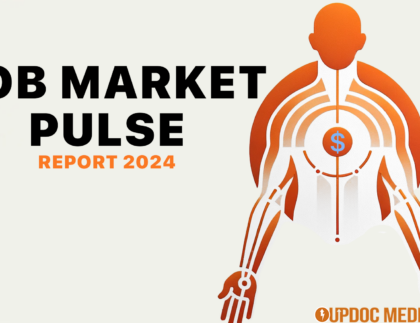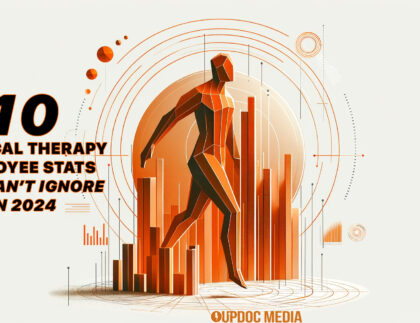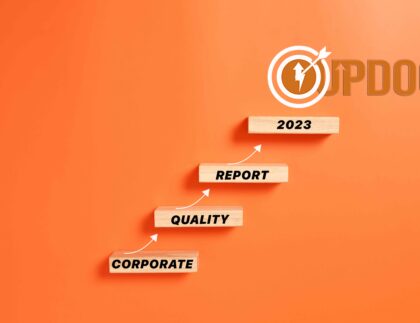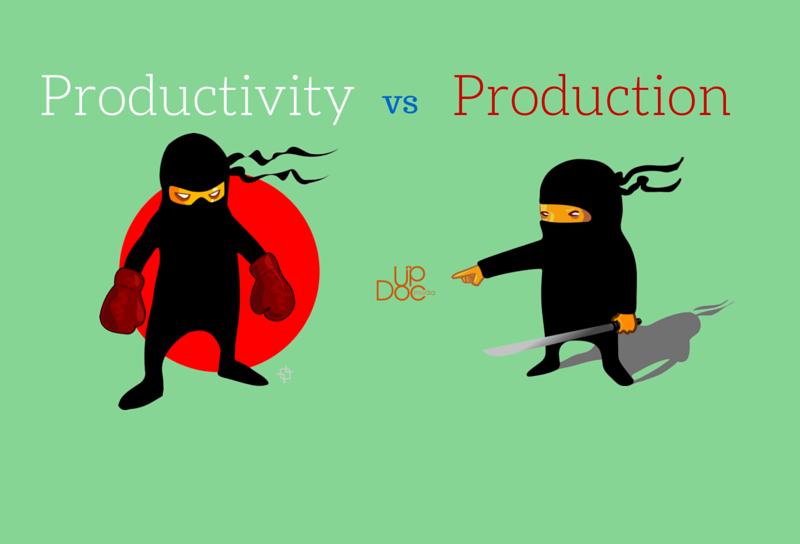
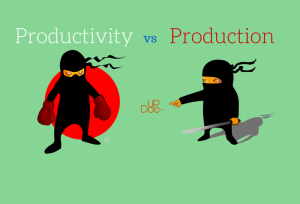
Through recent interactions with physical therapy business owners, students, new grads, seasoned professionals, managers, and those in the midst of career changes, I was once again reminded about what I consider to be the curse of the “Big 3.” Three professional elements which plague the Physical Therapy profession; invariably, regardless of setting or company, I always find physical therapists (owners, managers, and staff alike) complaining about:
- Productivity
- Turnover (or Talent)
- and, Marketing
Well, today we’re going to be talking about the P-word: PRODUCTIVITY, in the form of a small primer. I intend on following up next week with a 3 part post on the Big 3. NOW. Before we even get started, let me say this: Healthcare, not to mention Physical Therapy, has got productivity done all wrong.
Productivity vs Production
We worry about productivity because we think productivity has something to do with money, controlling for loss, and capturing missed opportunity. This, is where we have productivity done ALL wrong.
Productivity, as most companies measures it, is time dependent. Production, however, is independent of time. Therefore, productivity is really more a measure of happenstance efficiency. So long as patients don’t refuse care, cancel, no show, are not medically unstable, are physically available, etc., most clinicians can achieve a reasonable level of productivity. However, in many settings, this represents a severely underwhelming representation of how much production is actually being done — not to mention, most of these factors are completely outside of a clinician’s control to which most feel unfairly judged by such a standard of measure.
To this, I have a relevant story to share: Some of you know that this past week, I had to deal with yet another plumbing incident in my home. Yay… Now, what was truly interesting was listening to the plumber and a technician from another company talk about hourly pay versus being paid by the job.
The plumber, who had been in the business for many years and was also the service manager for the company said he would never go back to hourly pay. His rationale was this: Hourly pay incentivizes the lowest and slowest level of work for a minimally satisfactory quality of work because time is the prime factor and job completion is not. Being paid for by the job incentivize employees to get jobs done efficiently and correctly the first time through.
And, I agree!
So, let us bring all this back to healthcare.
Just as with plumbing, healthcare itself is a service. It’s not necessarily about how much time it takes to serve a customer, it has more to do with the fact that the job is done. Just fix the leak!
When it comes to how productivity fits into the discussion of physical therapy, many of us can remember a time when productivity standards were at 75%. Then, it increased to 80-85%. Over the last 18 months, I’ve been hearing a lot about companies “imposing” a 90-95% productivity standard, all under the premise that this is only way companies can stay in business and survive.
After all, if productivity is low, that means billing is low, which means revenue is low, which ultimately means businesses can’t afford to pay employees, cover overhead expenses, cost of operations & rending of services, and therefore, cannot stay in business and must close down!
#ItsTheEndOfTheWorldAsWeKnowIt #WeveHeardThisAllBefore
The problem is this: In healthcare, businesses don’t get paid for their time. Businesses get paid for getting the job done!
PRODUCTION, is getting the job done. When we start to manage production, we start to manage the direct activities responsible for our income framework.
However, when all we’re obsessed with is productivity, we get employees, employers, and managers complaining that they can never seem to get productivity up to snuff. There’s always a barrier, an upper limit to productivity they can motivate their team to achieve, be it 80%, 85%, 90%… it doesn’t matter. No one EVER seems to get above that mark which means all these businesses are missing out on capturing revenue potential. This equates to hundreds and sometimes thousands of dollars per clinician, un-captured, unrealized, wasted.
To capture this unrealized revenue, my recommendation has ALWAYS been value based pay. In fact, I’ve been getting quite a bit of interest, feedback, and queries regarding Value Based Pay, how it can fit in the framework of Physical Therapy, and where to start should a PT business wish to transition into value based employee compensation. What’s also super interesting about value based pay is how it can actually boost the true production value of inpatient services as well; but, that’d be a talk for next time 😉
So, let me wrap up this primer’ish discussion on productivity versus production with some real clinic data to demonstrated here below: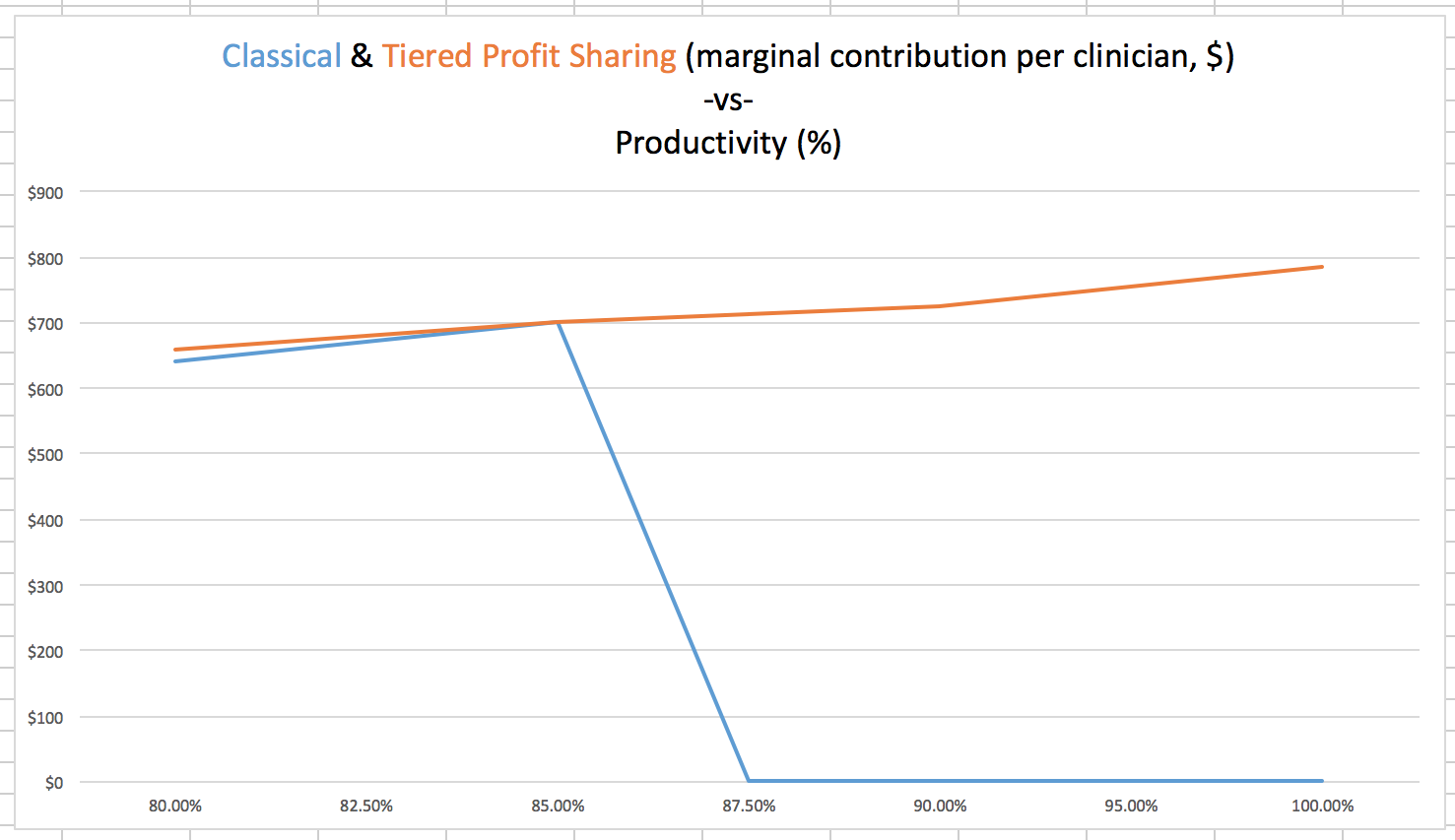
These numbers reflect the amount of money a clinician can contribute per day to an outpatient PT business when comparing classical/traditional forms of productivity via hourly pay versus a value based, tiered profit sharing system.
What is immediately appreciated is that 85% seems to be that magic point where classical productivity can never seem to get above. However, with this particular value based system, clinicians in this clinic can realize and capture the full revenue potential managers & owners have always wanted. For this particular clinic, each clinician can contribute nearly $100 more per day which means for a clinic of 5 full time clinicians, this business now can capture over $100,000 annually in previously un-captured revenue potential!
If this interests you, GOOD! I’ll be going into a bit more depth with next week’s posts. But, for now, I just want to leave you this with:
Production is how we are paid.
By making production our central focus in physical therapy operations, we can begin to directly optimize our revenue streams rather than haphazardly flounder against time and factors which neither our businesses nor our employees can control.
Production makes us money. Productivity makes us stressed out.
If you want to make production your renewed focus for 2016, there are many ways to do it. The depiction above just simply one strategy; a value based strategy which functions through tiered profit sharing. However, to do this, much change is required — by both the business and its employees. And, while change is never easy, it is always necessary.
We’ll be building on this next week. See you real soon!
Update! If you wish to continue reading about the “Big 3” in Physical Therapy, you can find them here:
